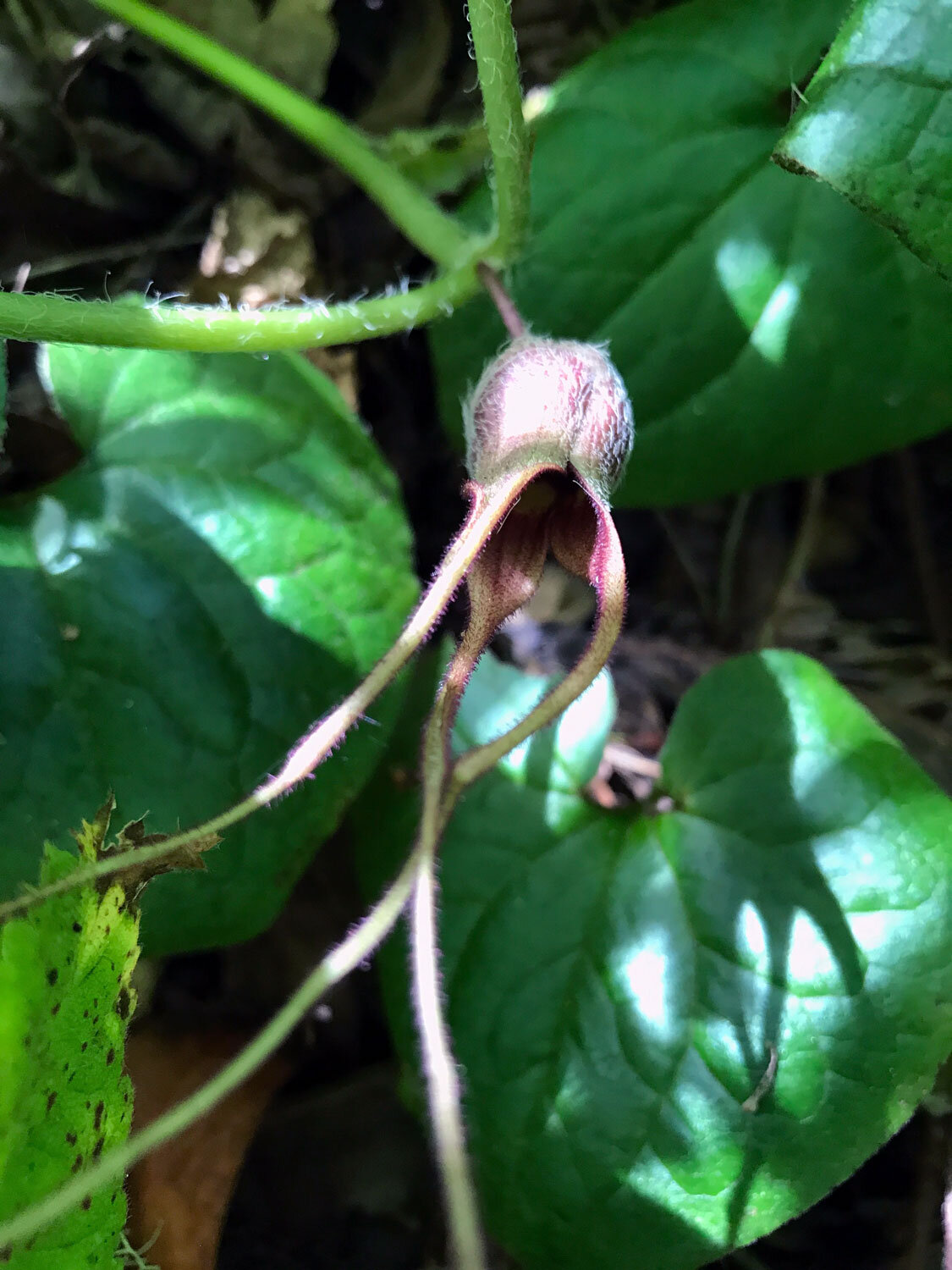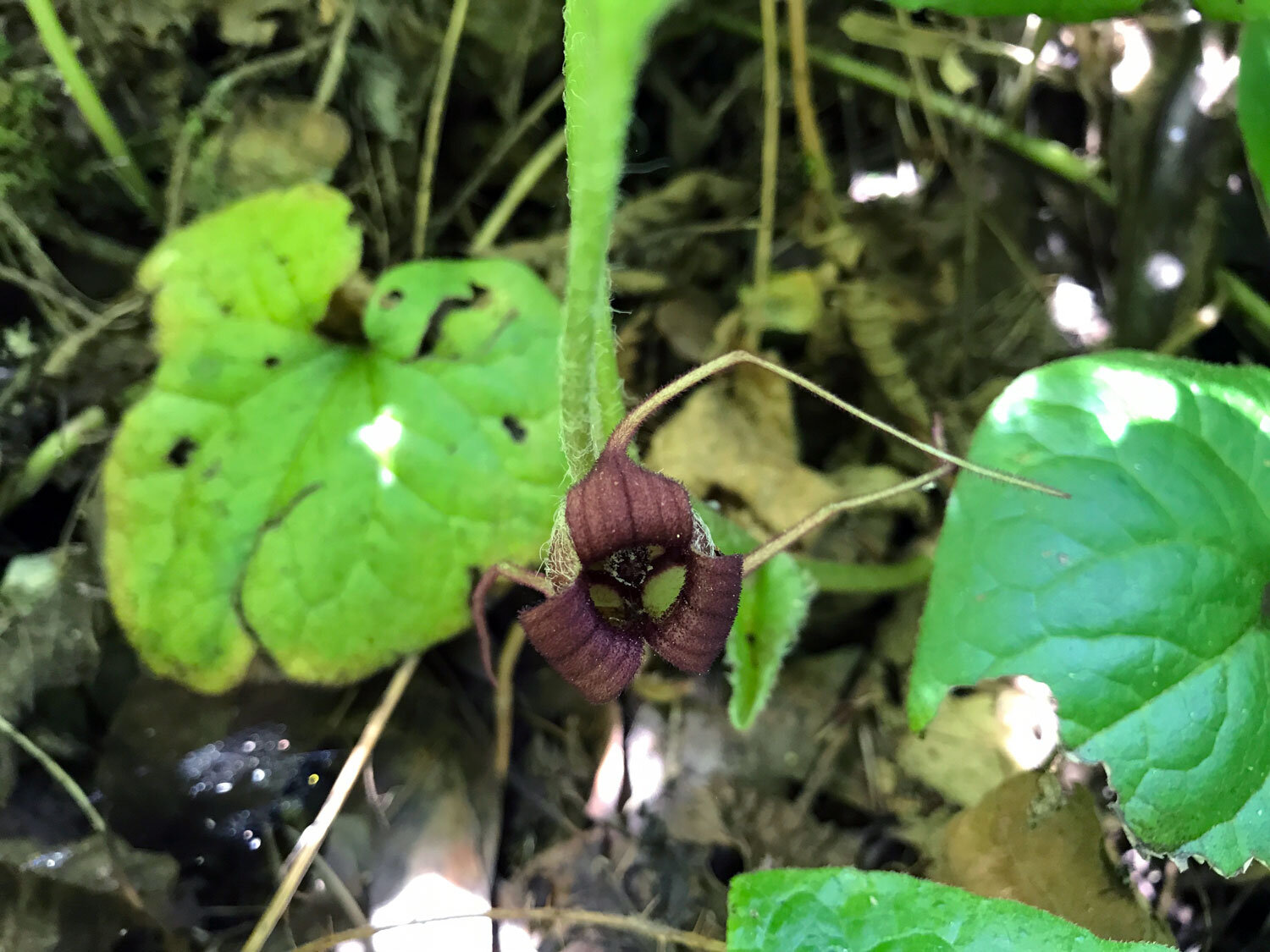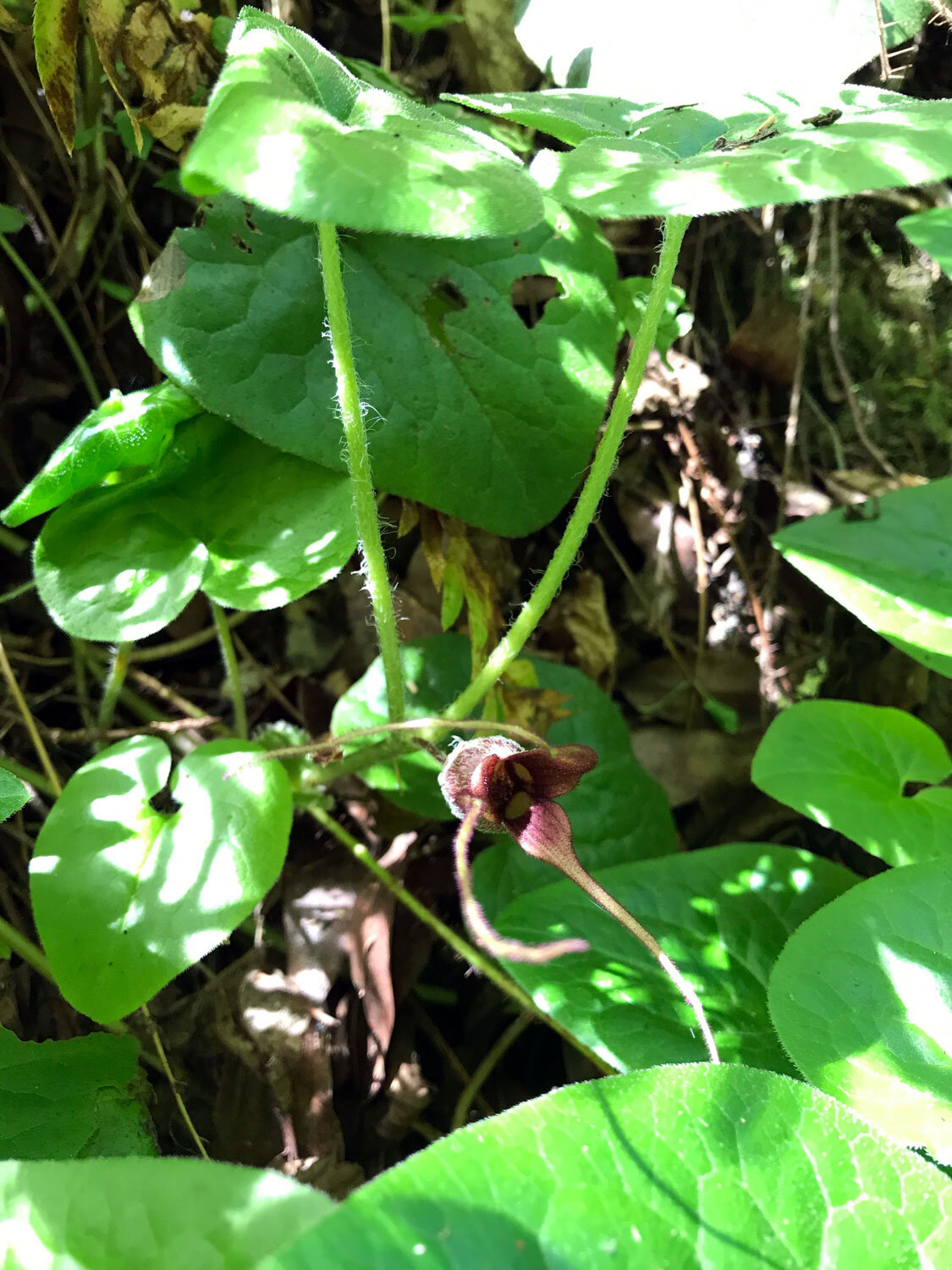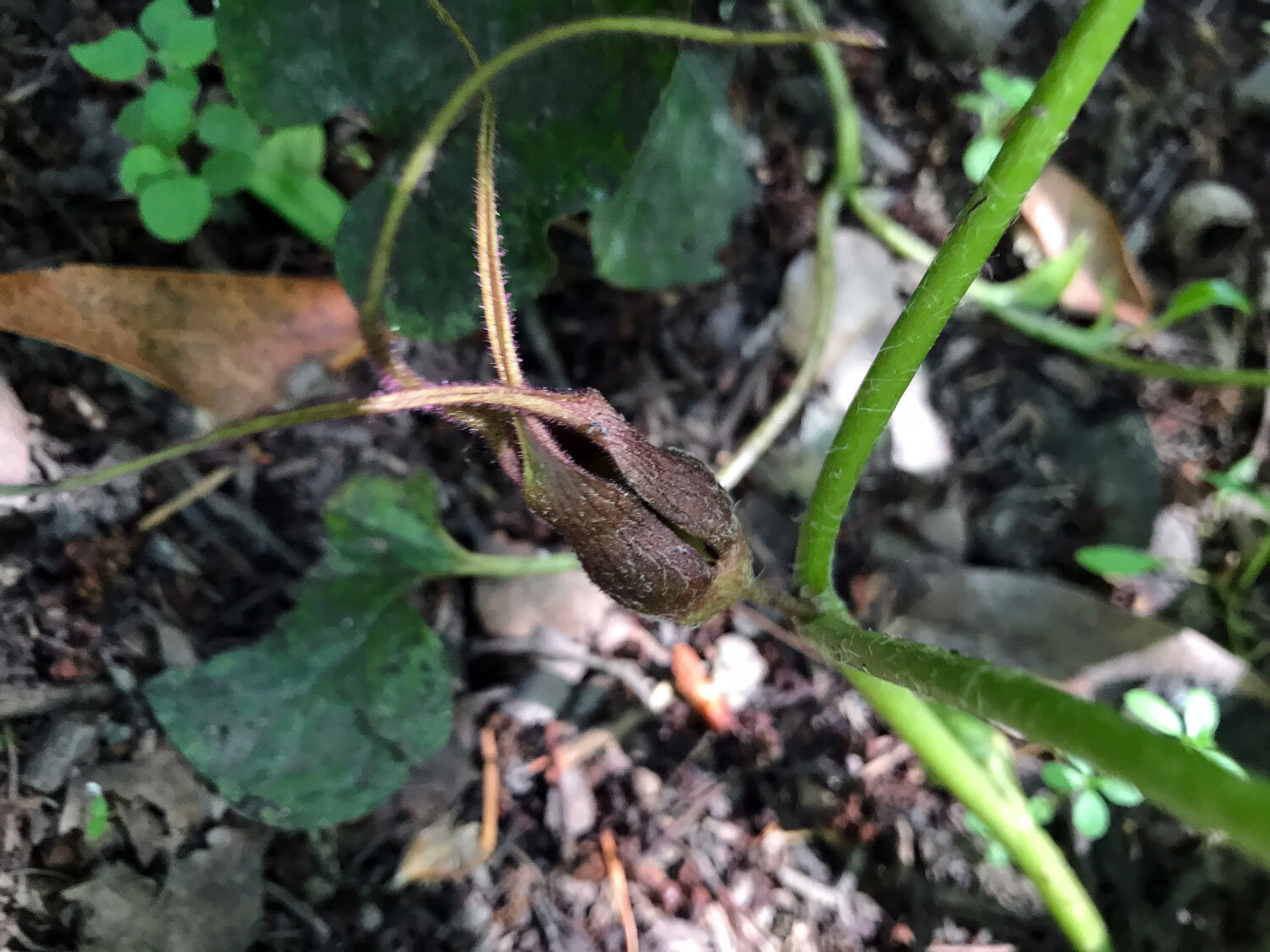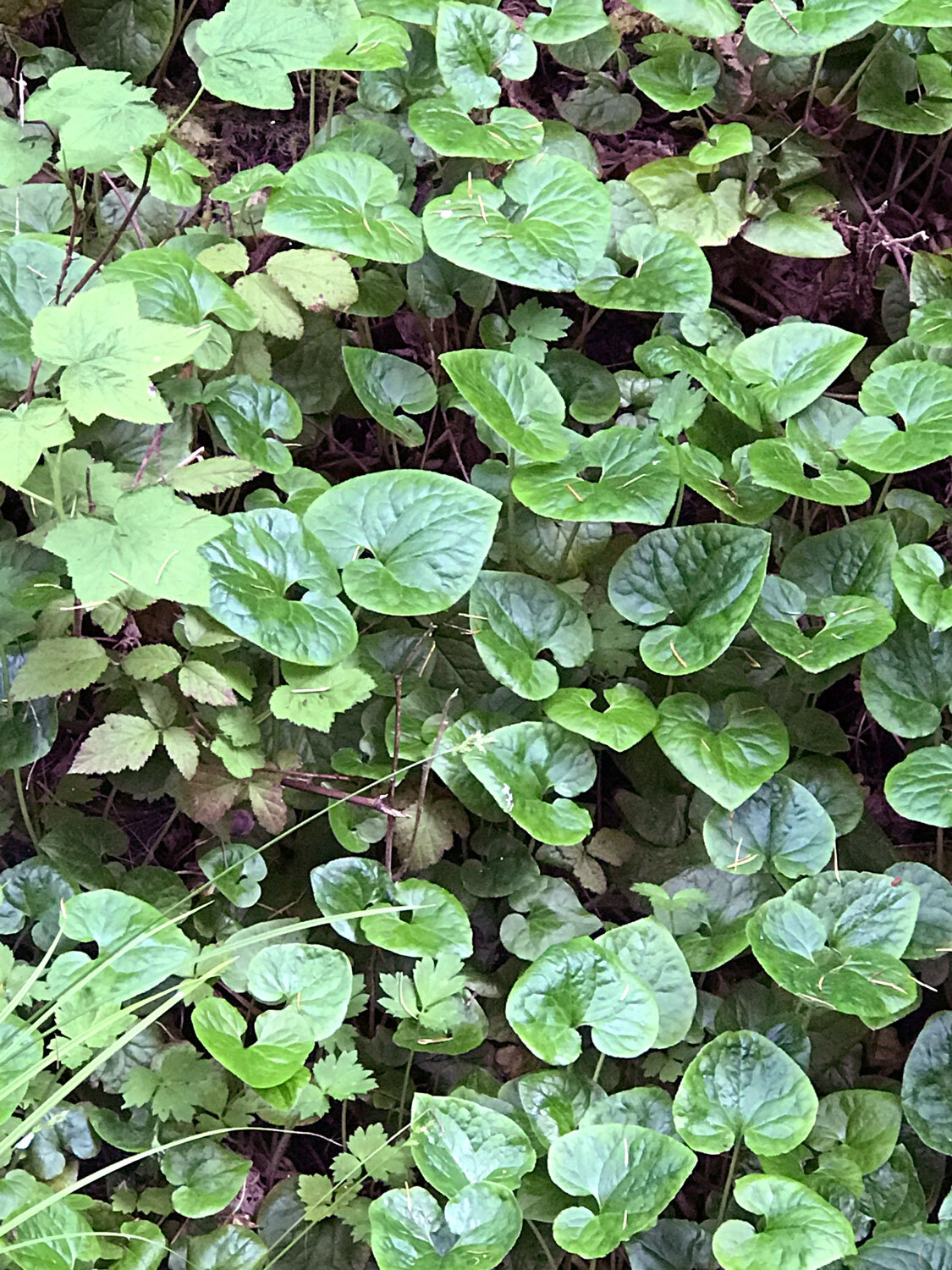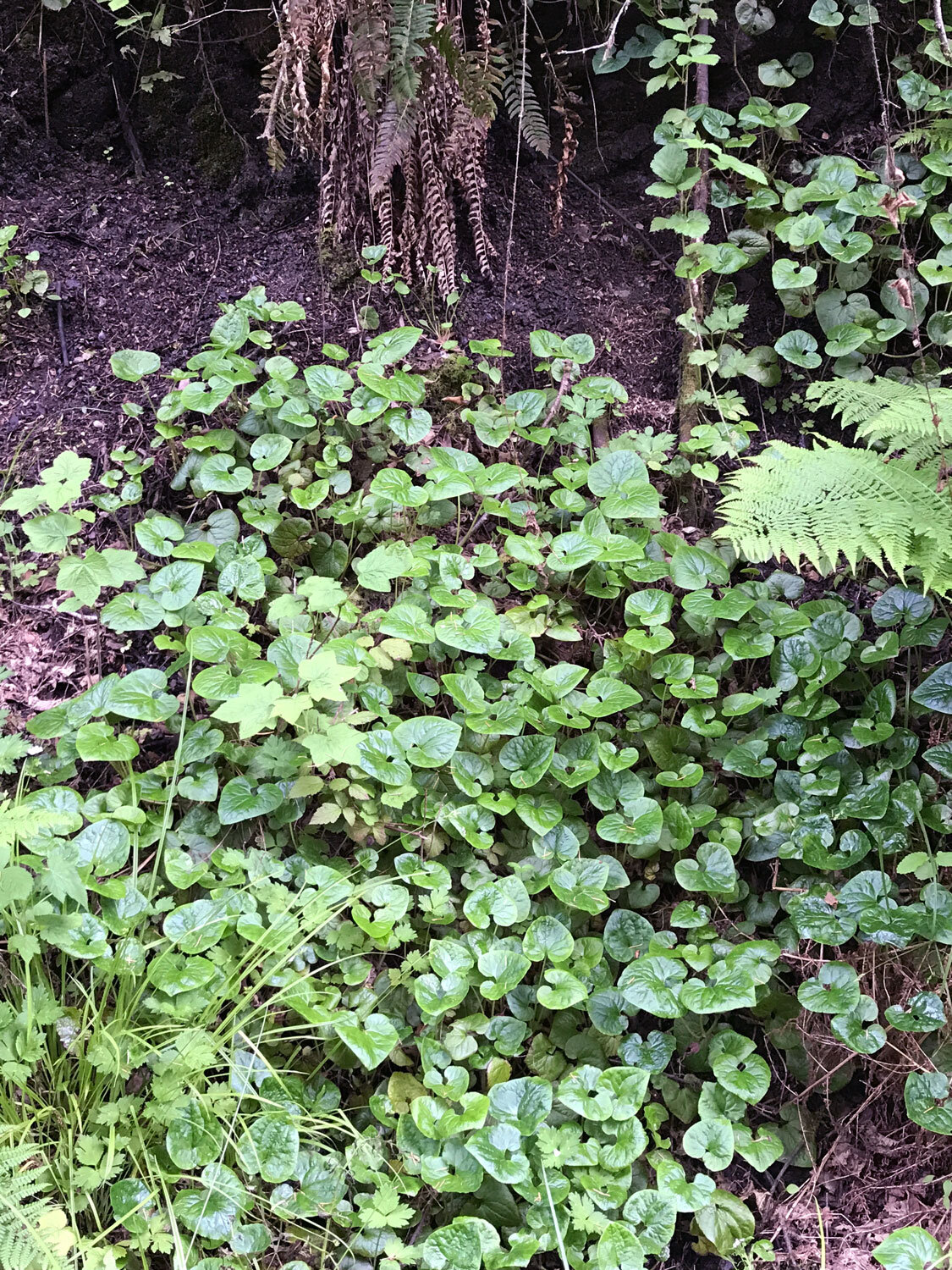Western wild ginger
The Bear Valley Trail is a shaded wonderland, home to plants who thrive in filtered light and a cool, moist environment. In spring 2020, I escaped the shelter-in-place confinement of my home to go on a quest to find the flowers of western wild ginger (Asarum caudatum). May is the height of its flowering season according to iNaturalist’s plant phenology. When I first encountered this plant several years ago, I mistook it as invasive ivy, which has very similar leaves only more pointed. I realized my mistake when someone corrected my observation on iNaturalist. It was then I realized just how much wild ginger grows in Point Reyes. The persistently foggy, mild climate in Point Reyes is perfect for wild ginger. It grows profusely along the Bear Valley Trail and the south end of the Bolinas Ridge Trail (south of the Randall Trail). The maroon-brown flowers blend with the earth and are not easy to spot from a distance. Look for clusters of wild ginger leaves under large fir and bay trees in moist areas. The flowers tend to be close to the ground and may be hidden under leaves.
Western wild ginger (Asarum caudatum) is also called long-tailed wild ginger. Caudatum comes from the Latin cauda meaning tail. This refers to the tail-like shape of the flower's calyx. Wild ginger is an herb found in western North America from British Columbia to Northern California and as far east as western Montana. It’s a perennial evergreen with heart-shaped leaves and flowers that develop March to August. The flowers are delightfully hairy with three sepals that curve backwards extending as long thin “tails”. The leaves smell like ginger when rubbed.
The plant reproduces by rhizomes which form colonies of sprouting leaves as they spread underground in rich, moist shaded soil. It can also reproduce sexually, with its seeds dispersed by ants. Their flowers are pollinated by flies. Ants are attracted by a fatty appendage attached to the seed. The ants carry the entire package back to their colonies. The seed is often dropped outside the nest once the ant realizes only the appendage is edible. Due to the costs of producing seeds with an appendage to attract ants, it is more energetically favorable for the plant to reproduce rhizomatously.
Wild ginger is thought to have antibiotic properties, and Native Americans used this plant to treat headaches, intestinal pain, knee pain, arthritis, indigestion, tuberculosis, colic and as a general tonic.
Learn more about foraging and eating the leaves and roots.
Sources: wikipedia via iNaturalist, USDA Forest Service

